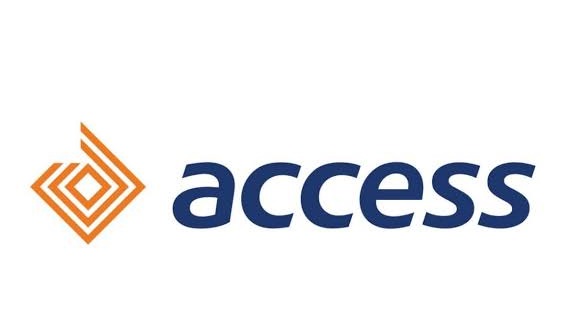- Search for topics or project materials by department. 2015/2016 Research Work 46 ARCHITECTURE 12 Accounting 158 Agriculture & Farming 21 Arts and Crafts 25 BIOCHEMISTRY 30 Bank & Finance 45 Biology 1 Business Administration 162 CHEMICAL ENGINEERING 18 Career People 18 Computer Science 0 Computer Science 244 Computer Science E-books 0 ECONOMICS 117 EDUCATION 78 ELECTRICAL ELECTRONICS 88 ENGLISH 14 ESTATE MANAGEMENT 16 Electrical Electronics 0 Food 19 Forum 0 General Topics 4 HOSPITALITY & TOURISM 123 Import & Export 10 Land Survey & Geoinformatics 68 Law 7 MARKETING 37 Marketing & Advertising 11 Mass communication 155 Masters and Doctorate 118 Mechanical Engineering books 0 Media & Publishing 6 Medical Science E-books 0 Micro Biology 4 Micro Biology 8 OTHERS 0 Oil & Gas 11 Online & Internet 36 POLITICAL SCIENCE 0 Program / Source Code 0 Programming E-books 0 Public Administration 25 Real Estate 20 Religious E-boooks 0 Retail 20 STATISTICS 17 Science Laboratory 0 Science laboratory 56 Sermons & Prophecies Ebook 0 Services 19 Small Scale Manufacturing 21 System Applications 0 Technology 30
DEVELOPMENT AND IMPLEMENTATION OF A MATHEMATICAL MODEL OF DISTANT EDUCATION SYSTEM
DEVELOPMENT AND IMPLEMENTATION OF A MATHEMATICAL MODEL OF DISTANT EDUCATION SYSTEM
DEVELOPMENT AND IMPLEMENTATION OF A MATHEMATICAL MODEL OF DISTANT EDUCATION SYSTEM
Abstract
In recent years, educators have witnessed the rapid development of computer networks, dramatic improvements in the processing power of personal computers, and striking advances in magnetic storage technology
These developments have made the computer a dynamic force in distance education, providing a new and interactive means of overcoming time and distance to reach learners
In this work, a webbased system was designed to further enhance the accessibility of distance education The system also used a combination of elearning and assessment techniques to deliver the prototype
The system was built around a threetier architecture model consisting of the server side and the client side connected through the Internet
The system was implemented with Apache as the web server, Microsoft Internet explorer as the web browser to achieve a secure clientserver communication and MySQL as the database management system The scripting engine uses serverside PHP functions to communicate with the database
Table of Contents
Page
Title Page i
Declaration ii
Certification iii
Acknowledgment iv
Dedication v
Absract vi
Table of Contents vii
List of Tables x
List of Figures xi
Chapter One: Introduction
11 Background of the Study 1
12 Research Motivation 4
13 Research Objectives 5
14 Research Methodology 6
15 Contribution to Knowledge 6
16 Organization of the Thesis 7
Chapter Two: Literature Review
21 Introduction 8
211 Correspondence Study to Distance Education 9
212 Open Learning in the United Kingdom 11
213 Distance Education in the United States 12
214 The Nigerian Open University 13
22 Theory 16
221 Theoretical Constructs 19
2211 Transactional distance 19
2212 Interaction 20
2213 Control 21
2214 Social context 22
23 Distance Learning Technologies 23
231 Same Time/Same Place Instruction 27
232 Same Time/Different Place Instruction 28
233 Different Time/Different Place Instruction 29
24 Future Directions and Emerging Technologies 33
241 Electronic Networks 34
242 Computers / Microprocessors 35
Chapter Three: System Analysis
31 System Models 38
32 Course Material Organization and Delivery 45
Chapter Four: System Design and Implementation
41 System Design 49
42 The Architecture for the Distance Education System 56
43 Learning Performance Measurement 57
44 Collaborative Study 59
45 Collaborative Study Performance 60
46 Implementation 70
47 Challenges 72
Chapter Five: Conclusion, Recommendation and Future Research
51 Conclusion 76
52 Recommendation 77
53 Future Research 80
References
CHAPTER ONE
INTRODUCTION
1.1 Background of the Study
Distance education, structured learning in which the student and instructor are separated by time and place, is currently the fastest growing form of domestic and international education. What was once considered a special form of education using nontraditional delivery systems is now becoming an important concept in mainstream education.
Distance education traces its origins to mid19th century in Europe and the United States. The pioneers of distance education used the best technology of their day, the postal system, to open educational opportunities to people who wanted to learn but were not able to attend conventional schools. People who most benefited from such correspondence education included those with physical disabilities, women who were not allowed to enroll in educational institutions open only to men, people who had jobs during normal school hours, and those who lived in remote regions where schools did not exist.
The invention of educational radio in the 1920s and the advent of television in the 1940s created important new forms of communication for use in distance education. Educators used these new technologies to broadcast educational programmes to millions of learners, thus extending learning opportunities beyond the walls of conventional teaching institutions.
View Related Projects
A SYSTEMIC FUNCTIONAL ANALYSIS OF LINGUISTIC SEXISM IN NIGERIAN SECONDARY SCHOOLS’ TEXTBOOKS
: INTRODUCTION1.1 Background to the Study 11.2 Statement of the Problem 101.3 Purpose of the Study 131.4 Scope o...
Continue readingPROBLEMS OF NOUN PHRASE WORD ORDER IN ENGLISH: A STUDY OF UNDERGRADUATE LEARNERS’ PERFORMANCE
ABSTRACTThis research presented in this study aimed at investigating the problems of noun phrase word order in English...
Continue readingPRINCIPALS’ MANAGEMENT SUPPORT PRACTICES FOR TEACHERS’ PERFORMANCE IN SECONDARY SCHOOLS IN ANAMBRA STATE
ABSTRACTThe purpose of this study was to ascertain the extent of principals management support practices for teache...
Continue reading

